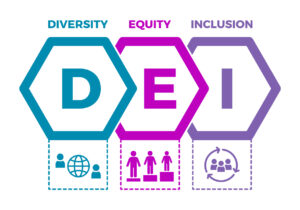Nasdaq seeks a rule requiring diversity on boards of directors of listed companies
The goal is to provide transparency and enhance investor confidence.

The Nasdaq stock exchange is seeking approval from the U.S. Securities and Exchange Commission for a new listing rule that would require companies on its U.S. exchange to publicly disclose diversity statistics about their boards of directors.
The rules would also require most Nasdaq-listed companies to either have—or explain why they don’t have—at least two diverse directors, including one who self-identifies as female and one who self-identifies either as LGBTQ+ or an underrepresented minority, defined as Black or African American, Hispanic or Latinx, Asian, Native American or Alaska Native, Native Hawaiian or Pacific Islander or two or more races or ethnicities.
The goal of is to provide stakeholders with a better understanding of the company’s current board composition and enhance investor confidence that all listed companies are considering diversity in the context of selecting directors, either by including at least two diverse directors on their boards or by explaining their rationale for not meeting that objective. As part of rationale for the new requirements, Nasdaq’s proposal presents an analysis of over two dozen studies that found an association between diverse boards and better financial performance and corporate governance.
“Nasdaq’s purpose is to champion inclusive growth and prosperity to power stronger economies,” Adena Friedman, the president and CEO of Nasdaq, said in a statement. “Our goal is to provide a transparent framework for companies to present their board composition and diversity philosophy effectively.”
Specifically, under the proposal, all Nasdaq-listed companies would be required to disclose board-level diversity statistics within a year of the SEC’s approval of the rule. All companies would be expected to have one diverse director within two years. Companies that don’t meet the board composition objectives within the required timeframes, would not be subject to delisting if they provide a public explanation of their reasons.

Outside observers agreed. “This proposal is a great step in the right direction,” says Rochelle Ford, dean and professor in the school of communications at Elon University. “Research shows that diverse boards result in high returns. Additionally, organizations and people often do not change unless regulations and laws change. Therefore, Nasdaq’s proposed requirement and consequences might effect real change and improve equity as well as ROI for the companies themselves. I believe it is the right and financially prudent thing to do.”
Another observer, Carmella Glover, executive director of the Diversity Action Alliance, a coalition of Public Relations and communications leaders, described the Nasdaq proposal as smart, and needed. “Two dozen studies indicating that diversity improves financial performance is evidence that companies that choose not to adhere to the proposed new regulations, will likely face economic consequences,” Glover says. “It’s also a needed step. Without a bit of a hammer coming down, this work would snail along as per normal. Moreover, organizations who don’t take this step seriously or who do view it as merely a trend face the possibility of drop in profitability.”

And Kim Clark, a diversity, equity, and inclusion consultant with the Ragan Consulting Group, called the move an example of what she counsels in communications training: Do what is before you to do. “What is in your power to change, to raise awareness, to provide more access and opportunity for everyone?” she asks. “NASDAQ has this power and many other options to participate, and they consciously—however cautiously—decided to take this action.”

Kim Clark






